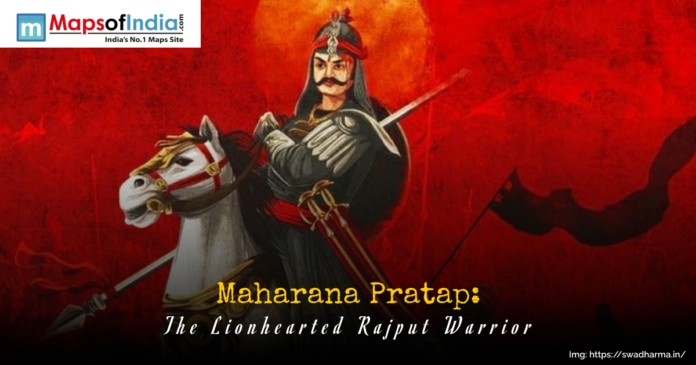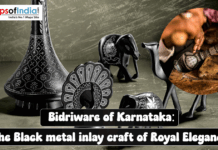Some names from Indian history are like stars in the night sky: bright, strong and never forgotten. Maharana Pratap is remembered for his great courage, honor and undaunted spirit above all others. His life is admired all over the country for his bravery, love of nation and sacrifices. He never let himself be defeated as king, fought for his nation as a warrior and showed strong character and justice to many generations.
Early Life and Ancestry
On May 9, 1540, in Kumbhalgarh Fort, Maharana Pratap came from the Sisodia branch of the Rajputs who ruled over Mewar in Rajasthan. King Maharana Udai Singh II, who ruled in Mewar, was also the man who built the city of Udaipur. Jaiwanta Bai, his mother, was a member of the royal Pali family.
From childhood, Pratap showed courage and the ability to lead. Other royal children were trained in palace comforts, while young Pratap preferred horse-riding, swords and stories about the bravery of the Rajputs. It was his ancestors and most notably Rana Sanga, who united several Rajput states against the Mughal Empire, that inspired him.
When Udai Singh died in 1572, a fight broke out about who would be the next ruler. Pratap was made Mewar’s 13th king when the nobles decided that he was the better choice, despite the fact Udai Singh chose his younger son, Jagmal, to succeed him as king. The victory was important both to the region and to Indian efforts to resist the Mughal empire’s growth.
The Growing Shadow of the Mughals
By the year 1556, Emperor Akbar enlarged the territory of the Mughal Empire. At various periods, Rajput rulers submitted to or merely joined forces with Akbar in exchange for marriage connections. However, under Maharana Pratap, Mewar stood out as an important exception.
Pratap made sure that Mewar maintained its freedom from outside rule. He would not accept Akbar’s authority, which was both brave and carried risks. Akbar tried twice to bring Pratap under his rule, sending envoys at first and armies later, but Pratap was adamant he would not bow to Akbar.
The Battle of Haldighati: A Test of Valor
The Battle of Haldighati in 1576 was the most significant event of Maharana Pratap’s life. The Mewar warriors battling the Mughal army headed by Man Singh of Amber, a Rajput leader working for Akbar, turned into a sign of resistance.
Unprecedented bravery appeared in the battle at the mountain pass in Haldighati near the town of Gogunda. While Maharana Pratap led 20,000 people, the army of the Mughal emperor was twice as big and better armed.
Pratap managed to guide his soldiers to success many times, thanks to his wide terrain knowledge, skilled use of guerrilla tactics and strong will. He led his campaigns on Chetak, a horse who eventually became famous in Indian history. Injured himself, Chetak lifted Pratap off the field and carried him to safety at the cost of his own life.
Even though Pratap had to leave the field and Pratap had to leave the field, the war did not achieve what it was aiming for. They were never pushed into giving up and Pratap always fought back.
Life in the Forests and Guerrilla Warfare
After the battle, he chose to leave his home rather than give up to the king. Rohilla himself and his followers went to the Aravalli hills and hid in nearby forests. Life brought a lot of hardship. The tales say that Pratap’s children ate grass bread and that his wife suffered greatly.
In difficult times, the desire to rebel did not disappear. He used guerrilla tactics by hitting Mughal outposts without warning and gradually got back the areas lost to them. His determination made his enemies respect him and brought admiration from his people.
Along with many other achievements, Pratap later returned Kumbhalgarh and Udaipur to his kingdom, while the Mughals controlled his capital, Chittorgarh.
Legacy of Honor and Patriotism
Indian history was shaped in part by Maharana Pratap’s firm willpower. Rana Pratap lived his entire life maintaining Rajputana honor, even when it meant giving up comfort. Others who believed the Mughals were stronger chose to cooperate, but Pratap decided not to allow them to conquer Mewar.
He died on January 19, 1597, in Chavand, the village he made his capital after trying for many years. Before he died, he told his son Amar Singh to never bow down to the Mughals.
Later, when Amar Singh made a deal with the Mughals, it was done in a way that Mewar stayed free and proud, not like other places that lost their freedom.
The Man Behind the Legend
Being a successful warrior is not what makes Maharana Pratap outstanding; it’s his character that really makes him stand out. Many times, he acted for the benefit of the people rather than for himself. Although he was living as an exile, he relied on free consent from citizens for taxes and handed out justice.
He respected his adversaries and never did anything insulting to them. It is noted that Mughal soldiers taken in battle were treated kindly and allowed to go free. Because of his progressive ways, poets, scholars and warriors from many regions of India were welcomed at his court.
Bhamashah’s deep loyalty and ready support demonstrate the strong faith many had in Maharana Pratap.
Maharana Pratap in Popular Culture
Long after he died, people everywhere in India still look up to Maharana Pratap. Here we join the endless retelling of his stories by singers, drama series and school readers. You can find statues of Rana Sanga across public spaces and his special day is celebrated each year by people in Rajasthan, among others.
Chetak is also honored, as many Monuments thank the horse for bravely helping Pratap in his time of need. Both the rider and his horse are remembered at the Moti Magri memorial in Udaipur.
Conclusion: A Timeless Hero
Maharana Pratap’s story is not only about military actions but also about a man who refused to change his values. With kingdoms taking power only to then give way and with loyalty being as fickle as sand, he was the steady strength in every chaos.
He demonstrated that people must be willing to give up goods in order to be free and respected. He showed that facing a formidable foe requires courage rather than fear. Maharana Pratap was more than just a monarch; he was a representation of courage, deference, and patriotism.
Even now, with people focused on success and compromise, his story lets us know that there are beliefs that are ultimately worth every choice in life. Living on are the values the lion of Mewar stood for in every individual with strong feelings for justice, freedom and pride.




